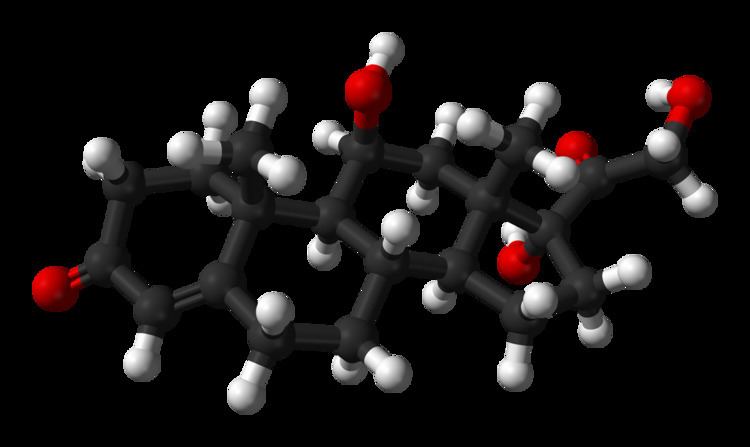 | ||
The cortisol awakening response (CAR) is an increase of about 50% in cortisol levels occurring 20–30 minutes after awakening in the morning in some people. This rise is superimposed upon the late-night rise in cortisol which occurs before awakening. While its purpose is uncertain, it may be linked to the hippocampus' preparation of the hypothalamic-pituitary-adrenal axis (HPA) in order to face anticipated stress.
Contents
Description
Shortly after awakening, a sharp 38–75% (average 50%) increase occurs in the blood level of cortisol in about 77% of healthy adults, and it occurs in people of all ages. The average level of salivary cortisol upon waking is roughly 15 nmol/l; 30 minutes later it may be 23 nmol/l, though there are wide variations. The cortisol awakening response reaches a maximum approximately 30 minutes after awakening though it may still be heightened by 34% an hour after waking. The pattern of this response to waking is relatively stable for any individual. Twin studies show its pattern is largely genetically determined since there is a heritability of 0.40 for the mean cortisol increase after awakening and 0.48 for the area under the cortisol rise curve.
Normally, the highest cortisol secretion happens in the second half of the night with peak cortisol production occurring in the early morning. Following this, cortisol levels decline throughout the day with lowest levels during the first half of the night. Cortisol awakening response is independent of this circadian variation in HPA axis activity; it is superimposed upon the daily rhythm of HPA axis activity; and it seems to be linked specifically to the event of awakening.
Cortisol awakening response provides an easy measure of the reactivity capacity of the HPA axis.
Sleep factors
Individual factors
Stress
Cortisol awakening response is larger for those:
Neurology
Cortisol is released from the adrenal glands following activation by ACTH release from the pituitary. The ACTH release creating the cortisol awakening response is strongly inhibited after intake of a low-dose dexamethasone. This is a synthetic glucocorticoid and this inhibition allows the detection of the presence of negative feedback from circulating cortisol that controls to ACTH-secreting cells of the pituitary.
In the hypothalamic-pituitary-adrenal axis the pituitary release of ACTH is regulated by the hypothalamus. This occurs through the hypothalamus's production of the hypophysiotropic hormone corticotropin-releasing hormone, the production of which is subject to circadian influence and the day/night cycle. In the cortisol awakening response, the hypothalamic-pituitary-adrenal axis is controlled by the hippocampus. For example, cortisol awakening response is absent in those with bilateral and unilateral hippocampus damage and hippocampal atrophy. Those with severe amnesia, and thus with presumed damage to the temporal lobe, also do not have it. Those with a larger hippocampus have a greater response.
It plausible also that the suprachiasmatic nucleus, the light-sensitive biological clock, plays a role in cortisol awakening response regulation.
Function
The function of cortisol awakening response is unknown but it has been suggested to link with a stress-related preparation in regard to the upcoming day by the hippocampus. One hypothesis is: "that the cortisol rise after awakening may accompany an activation of prospective memory representations at awakening enabling individual's orientation about the self in time and space as well as anticipation of demands of the upcoming day... it is tempting to speculate that for the CAR, anticipation of these upcoming demands may be essential in regulating the CAR magnitude for the particular day. The hippocampus is, besides its established role in long-term memory consolidation, involved in the formation of a cohesive construct and representation of the outside world within the central nervous system processing information about space, time and relationships of environmental cues. This puts the hippocampus in a pivotal position for the regulation of the CAR."
